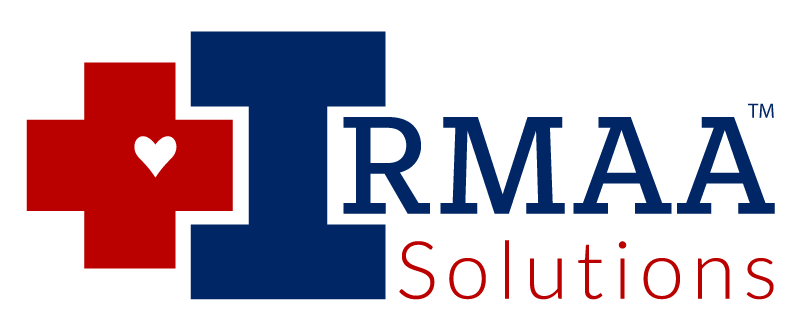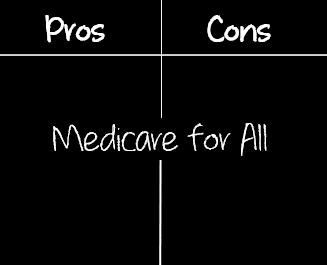The Pros and Cons of Medicare for All
One of the recurring debates within Congress revolves around the question of healthcare. Specifically, would it be a good idea to abolish private health insurance and provide government administered healthcare (Medicare) for all citizens? At first glance, providing Medicare for all seems like a great idea (we are not going to say it couldn’t work), however there are many aspects of this type of coverage that could result in a less than ideal healthcare system. To get a better understanding of this issue let’s take a quick look at some of the pros and cons of this system.
Because there is no definite plan of how Medicare for All would work, we will look at the current system and how it would function in a Medicare for All setting. Of course, if the United States decided to replace the private insurance system with all inclusive Medicare, the system would likely undergo some changes. That being said, lets take a look at the pros and cons of the Medicare system.
The main advantages of the Medicare system are cost and convenience. For most Americans, Medicare offers an affordable form of insurance. If a person is fully insured under Medicare, the out-of-pocket costs for necessary medical procedures are minimal. The premiums also tend to be affordable. As of now, approximately 90% of healthcare providers accept Medicare. This means you can see almost any provider anywhere in the United States and have your expenses covered.
The disadvantages of the Medicare system are giving complete control of the healthcare system to the federal government, the reliance of Medicare on private insurance, and lacking coverage. Giving complete control to the government means they can change any aspect of the program, such as premiums, without opposition. The current system is also very reliant on private insurance to administer aspects on the program such as Medigap, Medicare Advantage, and prescription drug coverage. The current system also does not provide coverage for services such as dental, vision, and hearing. In order to remedy these shortcomings, the current system would require a massive overhaul.
Pros and Cons of the current Medicare System.
| Advantages of Medicare | Cons of Medicare |
| Premiums for coverage may be less expensive than the premiums of private health insurance companies. | With Medicare for All, the federal government will be in complete control of setting the insurance premiums. |
| The out-of-pocket cost of services can be less expensive than what is offered by private insurance. | There are costs besides premiums that can only be covered through health plans offered by private health insurers. These plans may become extinct. |
| Roughly 90% of physicians in the United States accept Medicare. This means you can see pretty much any healthcare provider in the country without concern about coverage. | As Medicare is a reimbursement program with the federal government controlling the amounts paid to healthcare providers, more and more healthcare providers may stop accepting Medicare or leave the industry. |
| Medicare has a hidden tax on income through IRMAA. | |
| The current system does not provide for preventive healthcare. |
Lets take a deeper look at the pros and cons of Medicare for all. To begin, lets take a quick look at the current Medicare system.
What is Medicare?
Medicare is health insurance administered by the federal government. Currently, Medicare is only available to people who are 65 or older, retired, or have a qualifying health condition. Medicare is funded by taxes and by monthly payments made by the enrollee. Medicare is broken into parts. Each part deals with different types of medical expenses.
Part A is known as hospital insurance. It covers expenses incurred from a hospital visit. If you are enrolled in Medicare, you receive Part A at no cost. This is because part A is funded by taxes. It is not free; you just pay for it ahead of time. Every time you receive a paycheck there is some money withheld for Medicare. After you enroll in Medicare, that money is “paid back” in the form of free part A benefits.
Part B is known as outpatient insurance. It covers expenses incurred outside of a hospital. Things such as doctor visits and outpatient procedures fall into this category. Part B has a premium (monthly payment) that must be paid to receive coverage. In 2021, that premium is $148.50 a month. That amount tends to increase yearly. 10 years ago, in 2011, the monthly premium was $115.40. The premium also increases in price for individuals who have a higher income. This is called IRMAA. We talk more about IRMAA a little later. You can also read more about IRMAA here.
Part C is a little bit confusing as it is administered by private insurance not the federal government. Part C is also known as Medicare Advantage. Medicare Advantage plans are offered by private health insurance companies and take the place of federal Medicare part A and B. These plans cover the same things that part A and B cover, but often have other benefits as well. It should be noted that you cannot be enrolled in a Medicare Advantage plan, and federally administered Medicare. Medicare Advantage replaces original Medicare. If Medicare for All was implemented, Medicare part C would most likely go away. You can learn more about Medicare part C here.
Part D is known as prescription insurance. This insurance helps cover the cost of prescription drugs. Part D is administered by private insurance companies who partner with the federal government. Part D is also subject to IRMAA. This means that people who earn more will pay more.
There is also something known as Supplemental Plans or Medigap plans. While Medicare Parts A and B cover many expenses relating to hospital and outpatient services, there are some expenses in those areas they do not cover. A Medigap plan helps to fill the “gaps” in Medicare parts A and B coverage. Medigap plans are offered by private insurance companies.
What are the Pros and Cons of Medicare?
Now that you have a basic understanding of what the Medicare is and the different parts of the program. Lets look at the pros and cons of the program and how they might affect it if it was transitioned to Medicare for All.
Pros of Medicare
Full coverage for medical necessities
Medicare, specifically Original Medicare, is a fantastic program if it is utilized properly and the enrollee is fully insured. To be fully insured, one must be enrolled in parts A and B, have a Medigap plan that covers any costs Part A and B do not cover (Medigap plan G policy), and have a part D plan. If you are fully insured, are admitted to a healthcare facility that accepts Medicare, and the reason for your admission is for a medically necessary need, almost all your costs will be covered. The only expense you will pay is the Part B deductible ($203.00 for 2021) and, of course, your monthly premiums.
Nation Wide healthcare access
Another benefit to Medicare is that it is accepted by many healthcare providers across the United States. This means that you can see any physician you’d like; there is no networks that you must work through. So, if you don’t like the provider you are seeing, you can pretty easily switch to someone else. According to Forbes, “87 percent of family medicine physicians are taking new Medicare patients” while “99 percent of general surgeons and 98 percent of orthopedic surgeons take new Medicare patients.” Of course, those numbers may change, but it is still a much larger percentage of acceptance when compared to the network of providers often seen with private insurance.
Possible Lower cost for healthcare
As stated previously, if one is fully insured under Original Medicare and meets the requirements of being admitted as an inpatient, the costs for services to the Medicare beneficiary are minimal. Along with minimal healthcare costs, the cost of premiums (assuming you don’t become subject to IRMAA) can also be less expensive than private insurance premiums. On a national level, the premiums for Original Medicare in 2021 are:
- Part A – Premium free for those who qualify for Social Security benefits
- Part B – $148.50 a month.
- Part D – $70.16 a month which includes the Deductible.
- Supplemental or Medigap Plan G policy – $175.42 a month.
- Total monthly costs to be fully insured: $394.08 a month.
If utilized properly, the Medicare program is fantastic. If that same system were able to effectively expand to include everyone, it could be a terrific system. A system such as that could provide complete coverage, access to physician anywhere in the United States, and possibly at a lower cost than what private health insurers offer.
Drawbacks of Medicare
Unfortunately, a move to Medicare for All would have its fair share of drawbacks to accompany the benefits.
The federal government will be in complete control of paying healthcare providers.
The first benefit of the Medicare program is that there are very minimal costs to the patient for medical services. Unfortunately, the first con stems from this benefit.
When a fully insured Medicare beneficiary receives care, they’ll receive no bill other than the Part B deductible. For healthcare providers to receive payment for services, they must submit a bill to the Center for Medicare Services (CMS). Oftentimes the reimbursement they receive from CMS is much less than what they submitted.
According to Medicareresources.org this reimbursement program “refers to the payments that hospitals and physicians receive in return for services rendered to Medicare beneficiaries. The reimbursement rates for these services are set by CMS and are typically less than the amount billed or the amount that a private insurance company would pay.”
This may be one of the reasons for increasing health costs in the United States today. As the populating ages, enrolls in Medicare, and seeks medical services, healthcare providers are paid less for the services they provide. To offset these losses, the provider, historically has and may continue to raise prices.
If the current Medicare system was expanded to include everyone, it could create a situation where Healthcare providers are paid less and less for their services. The end result could be a decrease in the quality of care, or less people going into the medical profession.
The Federal Government will be in control of setting Medicare premiums.
Under the current system of Medicare, the federal government, through the Medicare Board of Trustees and CMS, sets the premiums and deductibles for Part A and B.
For Part D, the federal government sets the national base premium and the deductible. This influences the premiums set by the private health insurance companies that administer Part D plans.
Supplemental Insurance (Medigap plans) are also influenced by the federal government. The federal government sets the Part A deductible, which these plans cover, so the insurance companies must set premiums at a level that will compensate for the deductible.
Since its inception, Medicare has been inflating at a historic rate of over 7.5%. Combine this with an aging population and a reduction in medical staff, the federal government could justify almost any increase in costs in any given year.
There is an additional tax that doesn’t get advertised.
The current Medicare system has premiums that are “means tested” or based upon the amount of income the beneficiary receives. This is called the Income Related Monthly Adjustment Amount (IRMAA). When a person enrolls in Medicare, the IRS and CMS work together to determine how much income that person has. The person’s income is determined from their tax return from one to three years prior. If a person’s income is too high (Currently, above $88k for a single filer or $176k for married filers) they will be charged additional surcharges on top of the standard premium.
Their definition of income is also very broad. According to CMS and the IRS, income is defined as, “adjusted gross plus any tax-exempt interest” or everything on lines 2a and 11 of the IRS form 1040.
Some examples of income counted towards IRMAA:
Wages, Social Security, Capital Gains, Pension and Rental Income, Interest and any distributions from any tax-deferred vehicle such as a Traditional 401(k) or Traditional IRA.
The IRMAA brackets for 2021 are as follows.
| Individual | Married Couple | Part B | Part D |
| < $88k | < $176k | $148.50 | Premium (varies) |
| $88k – $111k | $176k – $222k | $207.90 | Premium + $12.30 |
| $111k – $138k | $222k – $276k | $297.00 | Premium + $31.80 |
| $138k – $165k | $276k – $330k | $386.10 | Premium + $51.20 |
| $165k – $500k | $330k – $750k | $475.20 | Premium + $70.70 |
| >$500k | >$750k | $504.90 | Premium + $77.10 |
With Medicare for All, the federal government can simply adjust these IRMAA brackets to generate more and more revenue.
The current Medicare system still relies on private insurance to function.
Under the current Medicare system, Part D, Part C, and Medigap are all administered by private insurance companies. Many Medicare for All plans completely abolish private insurance. This would involve some major overhauls to the current system.
Under the current system, there are many costs that are covered by private insurance companies. Without private insurance, the costs fall directly on the consumer.
The costs for Parts A and B in 2021 are:
- Part A Deductible – $1,484.00 per medical incident.
- Part A Co-Insurance – $371.00 per stay in hospital room for stays between days 61 to 90. $742.00 per stay in a hospital room for stays from day 91 and beyond.
- Part A Hospice Care – may be 5% of costs.
- Part A Skilled Nursing – $185.00 per day between days 21 to 100. All costs after day 100
- Part B Co-pay – may be 20% of cost.
- Part B Excess Charge – may be 15% of cost.
These costs can be covered through a Supplemental Plan or more specifically a Medigap Plan G policy. These plans are not offered through Medicare, they are administered by private health insurers.
After a beneficiary is discharged as an impatient, Part A and B will not cover prescription drugs. Coverage for prescription drugs after discharge must be handled by a Part D plan. These are offered by private insurance.
Medicare for All would require a massive overhaul of the system to compensate for all the costs covered by private insurance. Or private insurance would stop providing coverage and the costs would be passed directly to the consumer.
There may be no coverage for preventive healthcare.
Under the original Medicare system, preventive healthcare such as dental, vision, hearing, and routine physicals is not covered.
If a person wants coverage for these additional services, they must enroll in a Medicare Advantage plan. Some Medicare Advantage plans offer coverage for preventive services, such as those mentioned previously, as well as services such as transportation (SilverSneakers), prescription drugs, and even gym memberships.
Unfortunately, these plans are offered and administered by private insurance providers. If Medicare for All abolishes private insurance, coverage for these additional services may cease.
Conclusion
So, could Medicare for All work? We can’t say one way or the other. Most likely the current system would receive a major overhaul rather than just being expanded to include more people. An overhaul to the system would change the pros and cons listed above. As it stands today, Medicare holds some advantages over private insurance, but also has some drawbacks.
The benefits of Medicare are cost and connivence.
Medicare care costs for someone who is fully ensured tend to be much less expensive compared to what you’ll pay with private insurance. The premiums (monthly payments) associated with Medicare can also be less expense than the premiums of private insurance. Another benefit is that most healthcare providers accept Medicare which means that you can see almost any physician anywhere in the country.
The cons of Medicare for All are how reliant the current system is on private insurance and in giving the government control over your healthcare.
The current Medicare system is still fairy reliant on private insurance to make up for its deficiencies. For example, the current Medicare system lacks coverage for preventive healthcare. That kind of coverage can only be had through Medicare Advantage plans which are offered by private insurance. There are also other costs, such as deductibles and co-insurance for parts A and B, that are traditionally covered by private insurance. If private insurance is abolished, these costs could be passed onto the consumer, or the government would need to find a source of revenue to pay for these additional costs.
Another drawback would be the fact the federal government would be in charge of paying health care providers. If the reimbursements paid by the government are insufficient, as is often the case, healthcare providers may stop accepting Medicare or simply leave the profession. The government will also be in complete control of deciding how much the consumer owes for coverage each year. Depending on who is in leadership at the time, premiums could be changed without any opposition from private competitors. Medicare also requires those who earn more to pay more. This is because of IRMAA. Due to the IRS and CMS definition of income, many people who don’t think they earn “too much” can actually become subject to IRMAA and end up paying large amounts of money.
Ultimately, the question of Medicare for All will have to be answered by the voting public of the United States. Are we willing to hand over complete control of the healthcare system for the possibility of cheaper coverage? Either it will be a game changer for good, or we will, “get what we pay for.”


